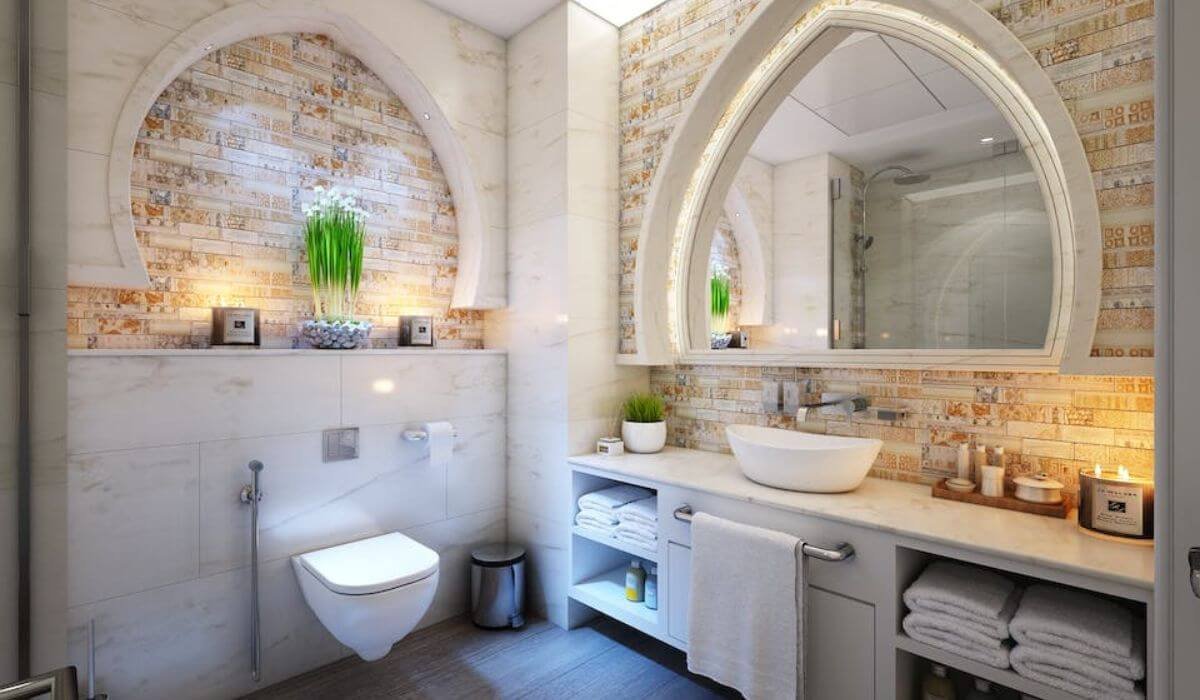Consider both design and function when selecting the fabric for your French door curtains. Because of the stunning scenery and abundance of natural light that can be accessed through French doors, it is important to have drapes that not only enhance the decor but also shield the interior from harmful UV rays. The right choice of cloth may make a world of a difference.
Linen and Cotton
Linen and cotton are two of the most used curtain materials for French doors. Both materials have an easygoing vibe that looks great with French windows and doors. Linen has a lovely drape and a supple, organic feel. It is incredibly low-maintenance because to its resistance to wrinkles and smells.
Cotton is comfortable to wear, allows the skin to breathe, and comes in a rainbow of colors and patterns. Cotton, however, wrinkles very easily. The best wrinkle-resistant textiles are those made of cotton blends or cotton with a light starch treatment.
Curtains made of natural materials like linen or cotton let fresh air circulate while softening the sun’s rays. You may want to line them if you need even more seclusion, but they do a good job otherwise. Cloths made from linen or cotton that screen the light are great for creating a private space.
Silk
Curtains made of silk seem really classy and expensive. The fabric has a soft shine and a fluid, graceful drape. Silk has excellent insulating properties and acts as a natural light screen. If you’re concerned about your privacy, consider lining or purchasing blackout-backed silk curtains.
Silk’s negative is that it’s fragile and needs to be dry cleaned. It might not hold up well in conditions of high humidity or intense sunlight. Although silk is more expensive, it is a worthwhile investment because it retains its luster and beauty with careful care for many years.
Related: Finding the Perfect Curtains for French Doors
Velvet
Velvet drapes add a touch of class to a bedroom or formal living space. The dense, fluffy pile is great for absorbing and reflecting light. Light, sound, and temperature swings are all dampened somewhat. Velvet is a superb noise and light barrier.
The delicate pile of velvet is easily crushed, which is a drawback. It collects dust easily and requires periodic steaming. And depending on the rest of your furnishings, it may come off as stuffy or official.
But velvet’s ability to screen light makes it a good option for rooms with little natural light or for narrow French doors.
Polyester and Other Synthetics
Curtains for a French door can be made from polyester, acrylic, microfiber, or any number of other inexpensive synthetic textiles.
Synthetics can successfully imitate the appearance of natural fibers like silk, linen, and cotton with the application of the appropriate textures and finishes. They don’t wrinkle easily and require little maintenance.
Light can be effectively blocked in a media room or bedroom using blackout polyester or multilayer poly curtains. Faux silks with a subtle texture can give an outfit a luxurious look without breaking the bank.
Keep in mind that the cheaper synthetics may not be as long-lasting or luxurious as the more expensive natural textiles.
Other Fabric Considerations
The weave and weight of the cloth also play a role in the fabric’s appearance, durability, and practicality. Fabrics with a tight weave are more discreet and shield from the sun’s rays. They maintain their form better over time, too.
Fabrics like voile and lace that are lightweight and breathable also filter light beautifully. Cotton, linen, and imitation silk are all examples of medium-weight materials that manage to strike an ideal balance between these two criteria. Velvet and brocade drapes offer the most privacy, but their weight can be too much for some French windows.
A fabric’s shape and durability are enhanced by a lining and backing, which also block some light. Curtains with linings are more insulating but require more maintenance than those without linings. The use of a backing can prevent solar damage to fragile materials.
Last but not least, the width of the fabric has an effect on its volume and its practicality. More people can squeeze through a set of doors if they’re wider.
The gentle waves it produces are a perfect complement to the elegance of French doors. A more tailored appearance is achieved by using narrower widths. Think about the overarching aesthetic you’re going for.
The possibilities are vast when selecting fabrics for French door curtains. Focus on the right balance of aesthetics, privacy, easy care and durability.
Linen, cotton, silk and velvet are classic choices, while synthetics like polyester are affordable options. Choose wisely and your new curtains will beautifully accent your French doors for years to come.






